So you’ve decided to build a greenhouse, but you don’t know where to start with the foundation? Don’t worry about it, we’ve all been there.
We know as well as anyone how daunting this task can be looking at it from outside, but once you get into it, it’s surprisingly simple.
There are a few things worth keeping in mind, and once you have the basic measurements and instructions, you’ll be good to go. Getting your foundation right means construction will be a breeze, but if it goes wrong, you’re really going to struggle and no matter how much tweaking you do, it’s not going to come right. As the old carpenter’s adage goes, “Measure twice; cut once.”
With all that in mind, let’s break down every step you need to build a greenhouse foundation.
Taking the first steps
We know you’re excited to get started, but before we can even start measuring a space, we need to take some steps to prepare a location for a greenhouse foundation.
Far from an uninteresting chore, this is crucial to ensuring everything’s above board, legal, and on good footing.
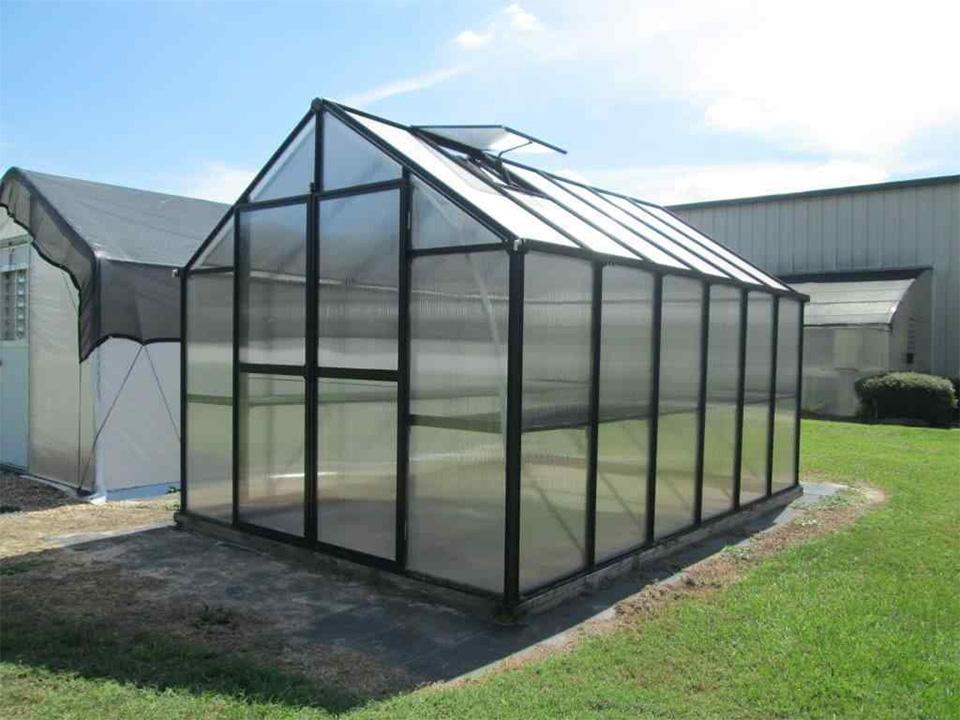
Identifying the right location for your greenhouse
The absolute first step to take is to identify the space you want to use for your greenhouse. Do a quick survey of the space you have available and make sure that it’s appropriate to use for a greenhouse.
The area should receive plenty of sunlight: at least six hours of direct sun each day. This is key in finding what direction your greenhouse should face.
Consider the path of the sun across your property to ensure the greenhouse is well-situated. Avoid areas with large, obscuring trees or buildings that may block sunlight. Also, consider accessibility and convenience – you’ll want the greenhouse a comfortable distance from your home and water source.
Determining the size and shape of your greenhouse
The size and shape of your greenhouse depends on a few factors: the available space in your chosen location, the types and quantity of plants you plan to grow, and your budget.
A popular choice for beginners is an 8′ x 8′ space which works excellently with our MONT 8×8 Greenhouse, but you can scale up or down as needed.
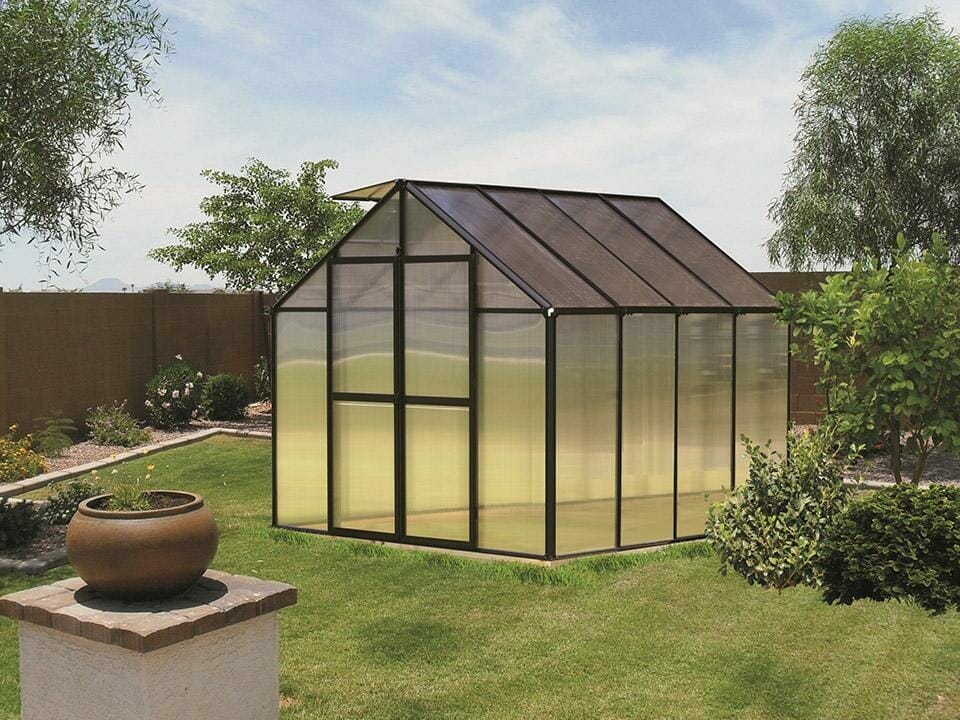
The shape is also important. Traditional greenhouses are generally square or rectangular, which makes for efficient use of space, but you can explore other shapes if you want something a little different or if you have unique spacing needs.
Bear in mind, however, that the layout of your greenhouse is going to be a bit more complicated if you have a non-standard shape.
Local regulations and codes for constructing a greenhouse
Before you begin construction, it’s important to check the local building regulations and codes in your area.
Some areas have specific requirements regarding the size, location, and type of greenhouse structures. These rules can affect many aspects of your greenhouse project, such as how close it can be to property lines or what materials are permissible. Violating these codes could result in fines or, in severe cases, mandatory deconstruction.
Securing necessary permits
Once you’ve researched local codes and regulations, the next step is securing any necessary permits. The process for obtaining a building permit varies by location, so you’ll need to consult with your local government’s planning or zoning department.
Generally, this involves submitting a detailed plan of the greenhouse for approval. It’s best to secure all necessary permits before construction begins to avoid any legal complications down the road. You don’t want to have to stop your project half-way through just to argue that everything’s safe and in order.
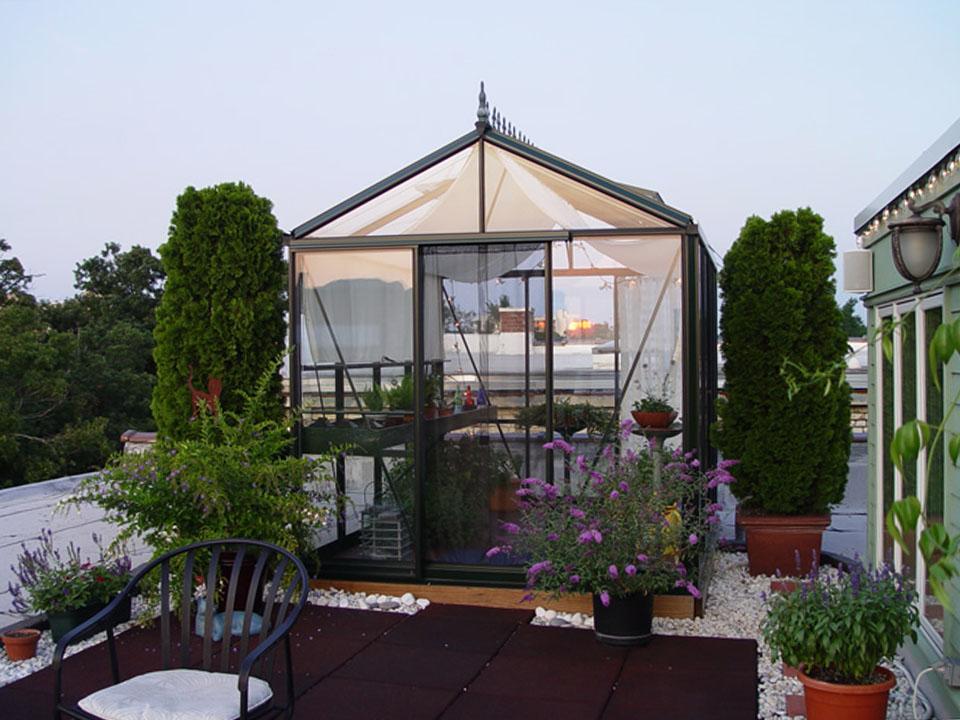
Taking these preparatory steps ensures your greenhouse project gets off to a smooth start. Planning well ahead of time can save you from unexpected troubles, allowing you to focus on the excitement of constructing and then using your very own greenhouse.
The right type of greenhouse foundation
Like everything in life, building a greenhouse foundation is a balancing act. You need to weigh up the pros, cons, and features of each type of greenhouse foundation and figure out which one is best for you.
We’ve put together a short list of various types of greenhouse foundations to help you find the right one for your space.
Most common greenhouse foundations
There are several types of foundations commonly used for greenhouses. Here are two of the most common:
Concrete slab: This is a solid concrete base that provides excellent stability. It’s ideal for larger, permanent greenhouses.
Pier foundation: This foundation consists of concrete or wooden pillars that are sunk into the ground. The greenhouse is then built on top of these piers.
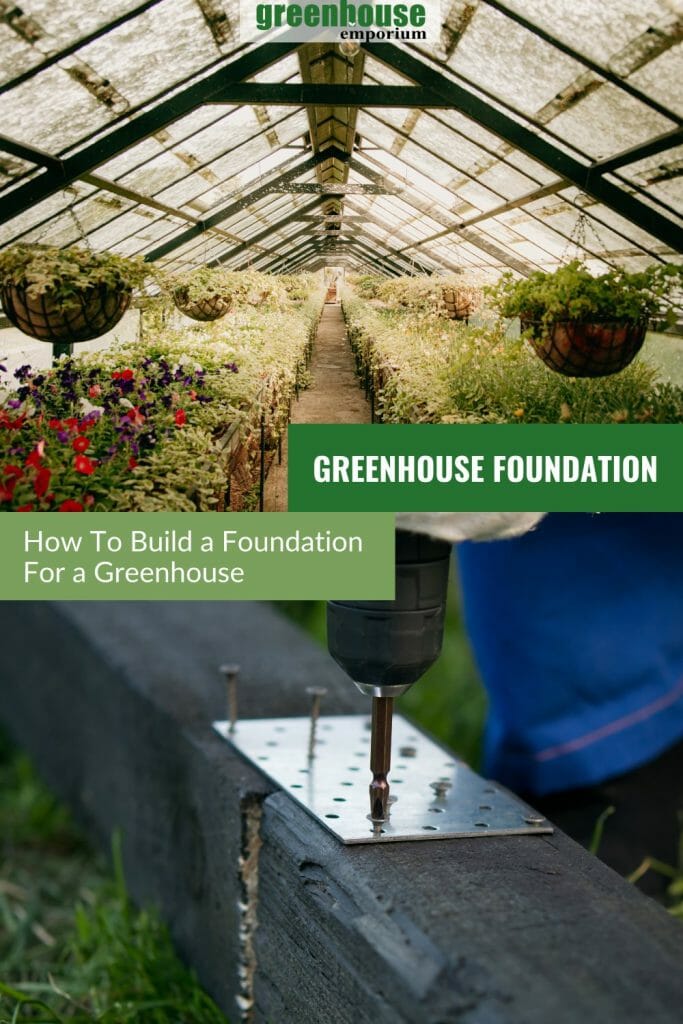
Pros and Cons of Each Type
Each foundation type offers distinct advantages and drawbacks:
Concrete slab
Pros: Provides excellent stability; ideal for heavy, permanent structures; low maintenance.
Cons: More expensive; permanent, offering no mobility; requires professional assistance.
Pier foundation
Pros: Stability on uneven terrain; improved drainage; can be less expensive than a full slab; reduced material usage; increased airflow.
Cons: May not support extremely heavy structures; requires precise installation.

Factors to consider when choosing a foundation
When choosing the type of foundation for your greenhouse, consider the following factors:
Cost: Your budget plays a significant role in deciding what type of foundation you can afford.
Durability: Consider the longevity you want from your greenhouse. If it’s a long-term structure, a more permanent and durable foundation like a concrete slab may be a better choice.
A short-term or hobby greenhouse won’t need as solid of a foundation as larger, permanent structures.
Climate: The local weather and ground conditions will influence your choice. In areas prone to heavy rainfall, for instance, a pier foundation can help prevent water-logging.
Greenhouse structure: The type and weight of your greenhouse also affects the foundation. Lighter greenhouses may be adequately supported by pier foundations, while heavier ones might require a concrete slab.
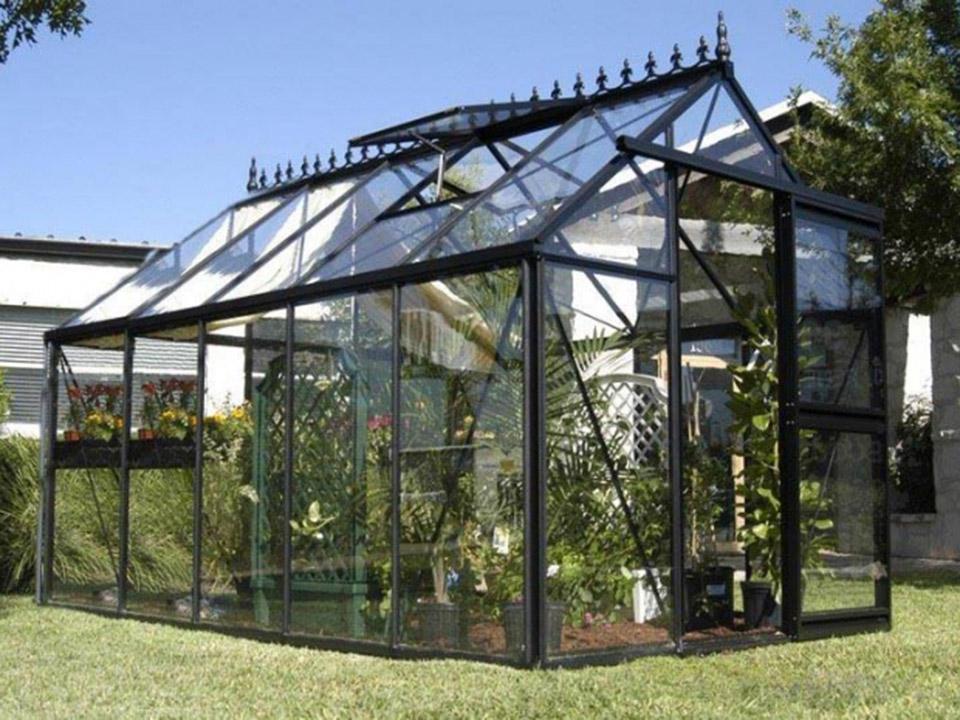
Greenhouse foundation materials and tools
Now we can start with the nitty-gritty of building your greenhouse foundation. Making sure that you have all the materials and tools necessary is going to keep you from stopping and starting while you work to scratch through your garage looking for a spirit level you haven’t used in years.
It’s also important since some of the steps are time-sensitive. You don’t want to pour concrete only to find that you’re missing what you need for the following steps.
Like with everything else, the quality of the materials used to build your greenhouse have an effect on the finished product, so make sure you go with trusted brands and suppliers.
Materials for the foundation
The materials you need largely depend on the type of foundation you choose. For a basic concrete slab or trench foundation, you will need the following:
Ready-mix concrete: Ready-mix concrete is easy and convenient. The amount you need depends on the size and depth of your foundation.
Gravel: Necessary for the sub-base of your foundation, which provides drainage and stability.
Wooden planks: Used for making the formwork for the foundation.
Reinforcing mesh or bars: To provide added strength to your concrete foundation.
Polythene sheeting: This is optional, but can be used as a damp-proof membrane between the concrete and the gravel.
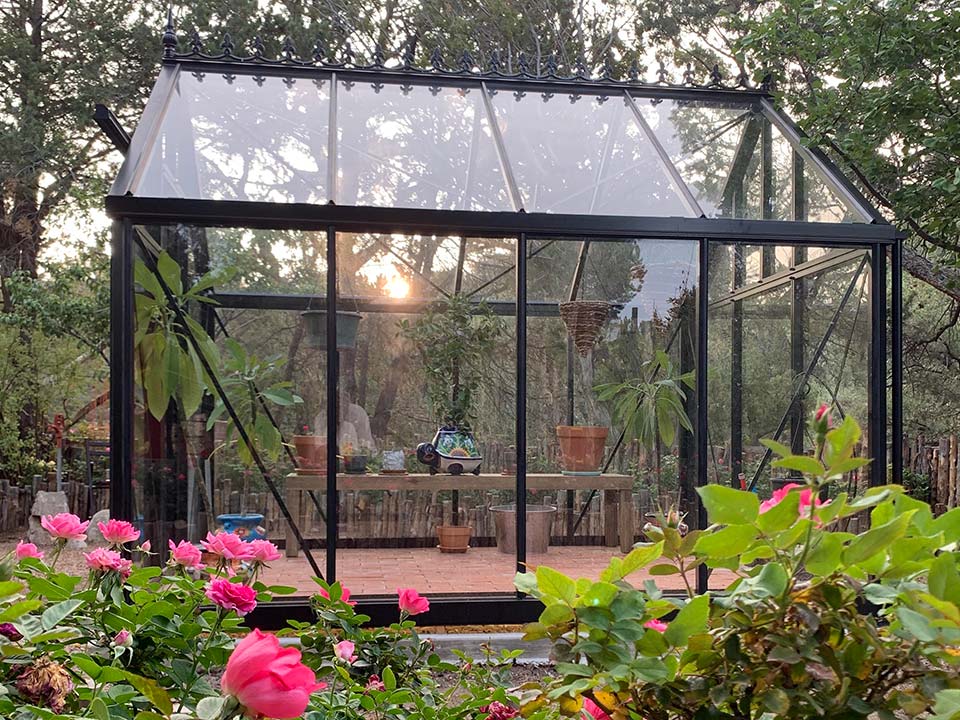
Essential tools for the job
Some of these tools are essential, some simply make the job of building your greenhouse foundation easier. Here’s what we recommend you have on hand before you begin:
- Shovel
- Trowel
- Spirit Level
- Wheelbarrow
- Hammer and nails
- Concrete mixer: Optional, but can make mixing your concrete much easier.
Safety equipment
While it’s hardly a risky project, safety is always an important consideration for any construction project. Here’s everything you need to make sure you have all the same pieces of your body at the end of the project as you do at the beginning:
- Safety goggles
- Gloves
- Steel-toe boots
- Dust mask
Good preparation is key to a successful project. By ensuring you have all the necessary materials, tools, and safety equipment before you start, you can focus on building a strong and stable foundation for your greenhouse.
Building greenhouse foundations
Concrete slab foundation
Mark the greenhouse area
Begin by outlining the footprint of your greenhouse dimensions on the ground using string and wooden stakes. This will determine the area for your foundation.
Excavate the site
Within the marked area, remove the top layer of soil to your desired depth, typically about 4 inches. This step may require the use of a shovel or a mini excavator for larger projects.
Create a wooden form
Build a rectangular wooden frame that matches the dimensions of your greenhouse. This frame will hold the concrete in place as it dries. Place the form in the excavated area and secure it with additional wooden stakes.
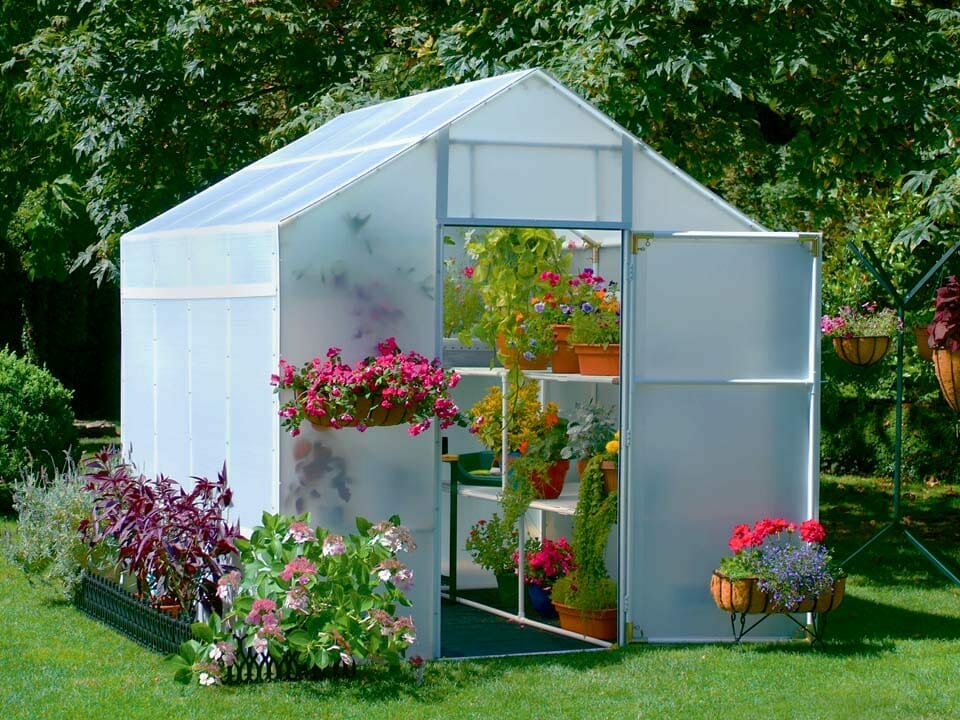
Lay gravel
Pour about 2 inches of gravel into the wooden form and compact it. This creates a solid sub-base for the concrete and helps with drainage.
Pour the concrete
Mix your concrete according to the manufacturer’s instructions, then pour it into the wooden form. Use a trowel to spread it evenly across the area, ensuring it reaches all the corners.
Smooth the surface
Once the concrete is spread, use a trowel or a concrete float to smooth the surface. It’s important that the surface is as level as possible.
Let it cure
Allow the concrete to cure for several days. This curing process is crucial for the concrete to reach its maximum strength. Avoid disturbing the concrete during this time.
Tips and tricks
Before you start, ensure that the site is level. This might require some grading work.
When pouring the concrete, do so evenly across the entire area to prevent weak spots or inconsistencies.
Keep the concrete moist as it cures to prevent it from drying out too quickly, which can lead to cracking. Covering it with a plastic sheet retains moisture.
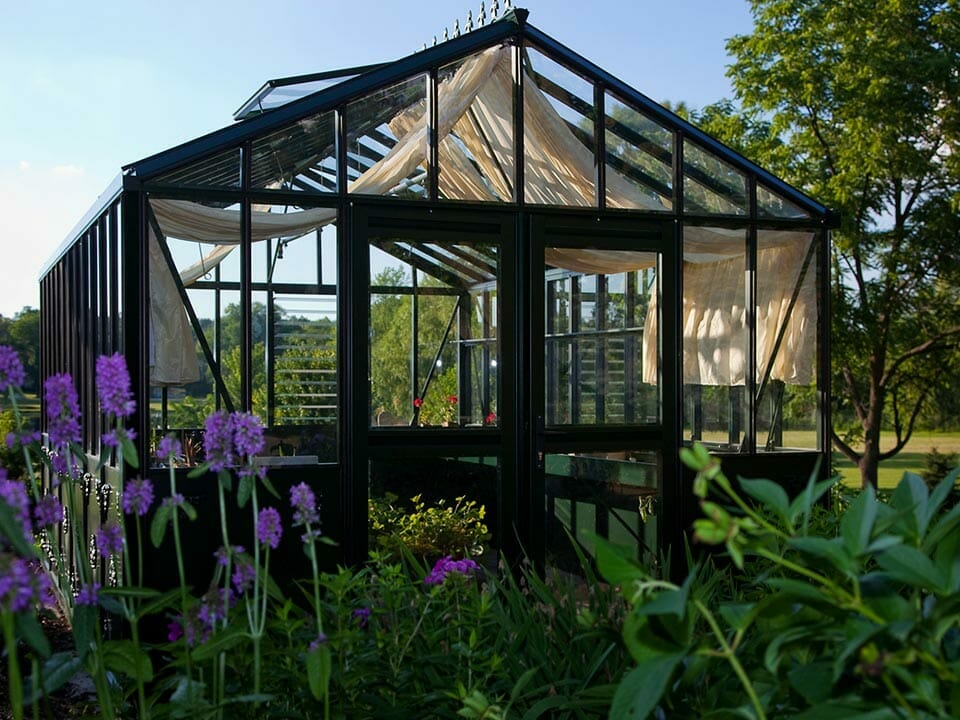
Pier foundation
Mark the greenhouse area
Start by outlining the footprint of your greenhouse on the ground using string and wooden stakes. This marks the perimeter of your foundation.
Identify pier locations
Within the marked area, determine the locations for your piers. Piers should be placed at each corner of the greenhouse and along the sides at regular intervals. The specific spacing will depend on the size of your greenhouse and the load it needs to carry.
Dig holes
At each marked spot, dig a hole that is roughly 4 feet deep or until you reach solid ground. The diameter of the hole should match the diameter of your chosen piers.
Install the piers
Pour concrete into each hole, and then insert a post anchor into the center of each one while the concrete is still wet. Ensure that the top of each pier is level and that the heights of all piers are consistent.
Let it cure
Allow the concrete to cure completely before proceeding with the construction of the greenhouse. This curing process may take several days.
Tips and tricks
Use a laser level or a long straight edge and level to ensure all your piers are the same height. Uneven piers lead to a crooked greenhouse.
Remember that precise positioning of the piers is crucial. Check and double-check your measurements before digging.
Consider using cardboard form tubes for a more uniform and easier installation of your piers.
























